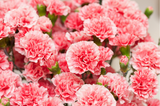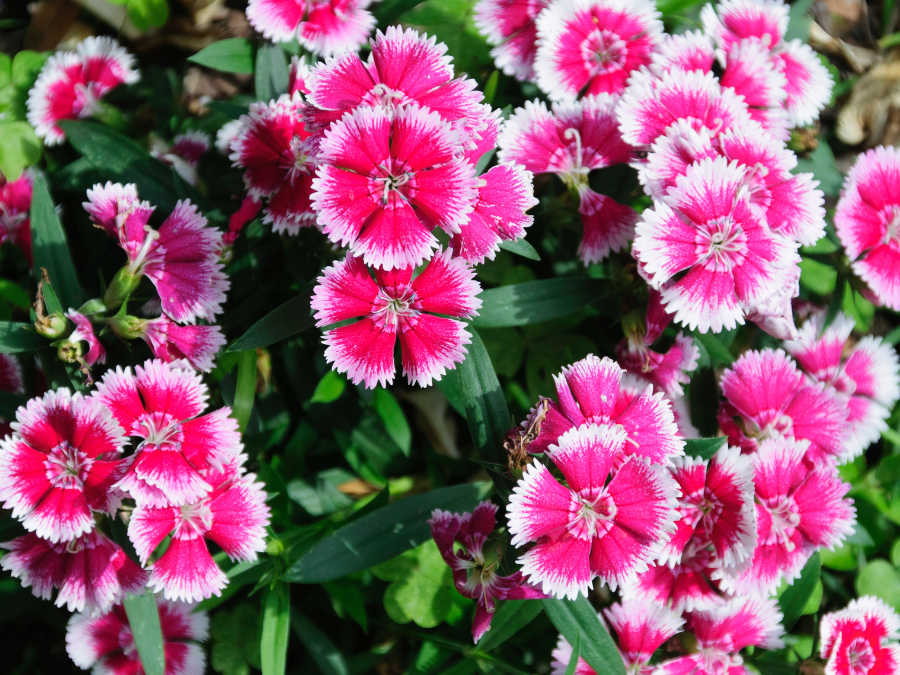Dianthus, also known as Pinks, Carnations, and Sweet Williams, encompass over 300 species and are native to Europe and Asia. They prefer full sun (at least 6 hours), well-drained loamy soils, and weekly watering if needed. They are herbaceous perennials with opposite leaves, grey-green to blue-green foliage, flowers having 5 petals, and frilled petals. Many of the perennial varieties are noted for a spicy clove-like fragrance.
There are 4 patterns of flower – solid, bi-color, picotee, and eyes. They flower best in spring into early summer, usually taking a break during the heat of summer and re-bloom in late summer into fall. A light tipping can assist with the re-bloom. Flower colors can be red, rose, lavender, white, coral, and yellow.
Issues with Dianthus are usually a result of poor cultural practices.

Overwatering, poor soil drainage, heavy mulching, and shade can result in root rot, and infection with fungal and bacterial pathogens. Many prefer not to mulch or to use stone as a mulch as it drains quickly.
Dianthus varieties grow from a 4-inch mat to a 3-foot herbaceous perennial. Depending on the variety they can be perennial, annual, or bi-annual.
They are relatively easy to maintain, hardy from zones 3-9, and are wonderful as a garden border. They can be divided, and seeds can be spread but, by deadheading, you increase your flowering ability.
A nice addition to any garden and their fragrance makes the Dianthus a wonderful garden addition.

























